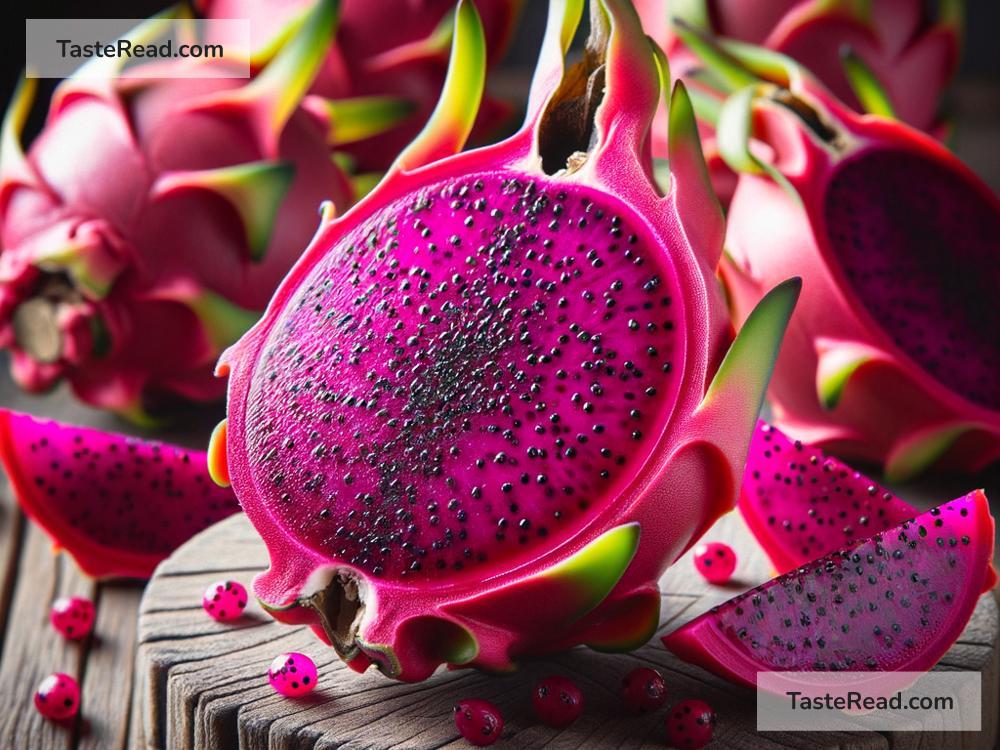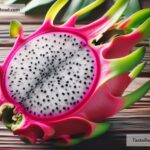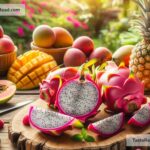Why Dragon Fruit Has Such Vibrant Colors
Dragon fruit is a stunning, eye-catching tropical fruit that has won the hearts of people around the world. Whether it’s bright pink, fiery red, or sunny yellow on the outside—or its speckled, vibrant flesh on the inside—dragon fruit looks almost magical. But have you ever wondered why dragon fruit is so colorful? The science behind its vivid hues is fascinating yet easy to understand. Let’s dive into the story of dragon fruit’s vibrant colors and learn what makes this fruit stand out.
What Is Dragon Fruit?
Dragon fruit, also known as pitaya, grows on a type of cactus called Hylocereus. It thrives in warm climates like Southeast Asia, Mexico, Central America, and parts of the United States. The fruit’s appearance is truly unique: it often has flame-like spiky scales, which make it look like something straight out of a fairy tale. Dragon fruit comes in three main varieties:
- Pink skin with white flesh (most common)
- Pink or red skin with red flesh (slightly sweeter)
- Yellow skin with white flesh (smaller and sweeter)
While the colors may differ, one thing is true for all dragon fruits: they are incredibly vibrant.
Why Is Dragon Fruit So Colorful?
The secret behind the dragon fruit’s rich pinks, reds, and yellows lies in natural pigments found in plants called betalains and carotenoids. These compounds not only make the fruit beautiful but also provide health benefits.
Betalains: The Pinkish-Red Powerhouses
Betalains are unique pigments responsible for the red and purple hues in fruits and vegetables. In dragon fruit, especially the red-fleshed variety, betalains are abundant. They create the deep magenta or ruby red color that makes the fruit so mesmerizing.
Betalains are not just pretty—they also act as antioxidants. Antioxidants help fight free radicals in your body, which can cause damage to cells. Eating dragon fruit means you’re not only enjoying its striking colors but also giving your body some extra defense against aging and diseases.
You’ll find betalains in other foods like beets, Swiss chard, and prickly pear cactus, but dragon fruit makes consuming these pigments much more fun and delicious.
Carotenoids: The Yellow Stars
The yellow dragon fruit gets its sunshine-like hue from carotenoids, another type of pigment. Carotenoids are responsible for yellow, orange, and red tones in fruits and vegetables like carrots, mangoes, and papayas. These pigments are also powerful antioxidants that promote eye health, support your immune system, and reduce the risk of certain diseases.
Carotenoids are more abundant in dragon fruit varieties with yellow skin, and they ensure that the fruit shines like gold. Eating a yellow dragon fruit is like eating a burst of tropical sunshine!
Why Plants Use Pigments
Plants use pigments like betalains and carotenoids for various reasons. For dragon fruit, its bright colors play an important role in survival and reproduction.
-
Attracting Pollinators: Dragon fruit grows on cacti and produces flowers that bloom at night. These flowers rely on bats, moths, and other nocturnal creatures to carry pollen. The vibrant colors of dragon fruit signal to pollinators and animals that the fruit is ripe and ready to eat, encouraging them to spread its seeds.
-
Protection Against Harsh Sunlight: The pigments in dragon fruit also help protect the plant’s cells from damage caused by intense sunlight. This is especially important since dragon fruit grows in hot, sunny regions where UV exposure is high.
How the Environment Affects Dragon Fruit’s Colors
Did you know that dragon fruit’s colors can change depending on where it’s grown and how much sunlight it receives? Sunlight and soil conditions can influence the intensity of its pigments. For example, dragon fruit grown in hot regions with lots of sunlight often has brighter, deeper colors. On the other hand, fruits grown in cooler or shaded environments may have slightly lighter hues.
Other Reasons to Love Dragon Fruit
It’s not just the colors that make dragon fruit special. The fruit is also packed with nutrients! It’s rich in vitamin C, fiber, and antioxidants, making it a healthy addition to your diet. Plus, its refreshing flavor and unique texture make it perfect for smoothies, salads, and desserts.
The seeds inside dragon fruit are tiny but mighty—they contain healthy fats that are good for your skin and heart. So, the next time you’re enjoying this colorful fruit, remember that it’s not only beautiful but also incredibly nutritious.
Final Thoughts
Dragon fruit’s striking colors come from natural pigments like betalains and carotenoids, which make the fruit visually appealing and provide health benefits. Its vibrant hues also help the plant attract pollinators and protect itself from the sun.
Whether you’re biting into a ruby red, snowy white, or golden yellow dragon fruit, you’re enjoying the wonder of nature’s artistry. It’s a reminder that the world of fruits isn’t just delicious—it’s bursting with color and science as well! So, grab a dragon fruit, admire its beauty, and savor the magic it brings to your plate.


